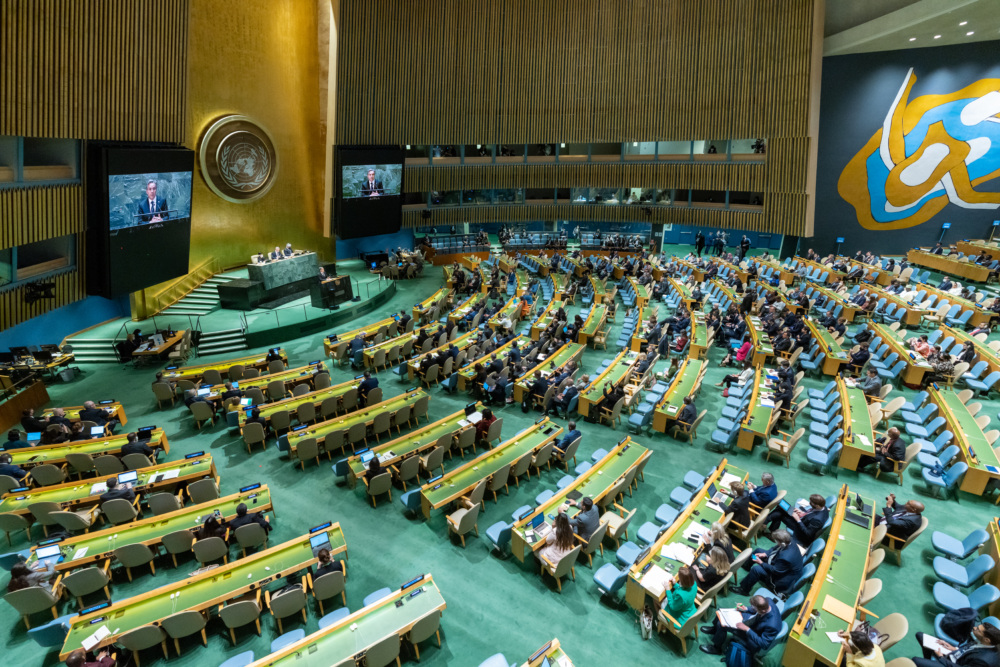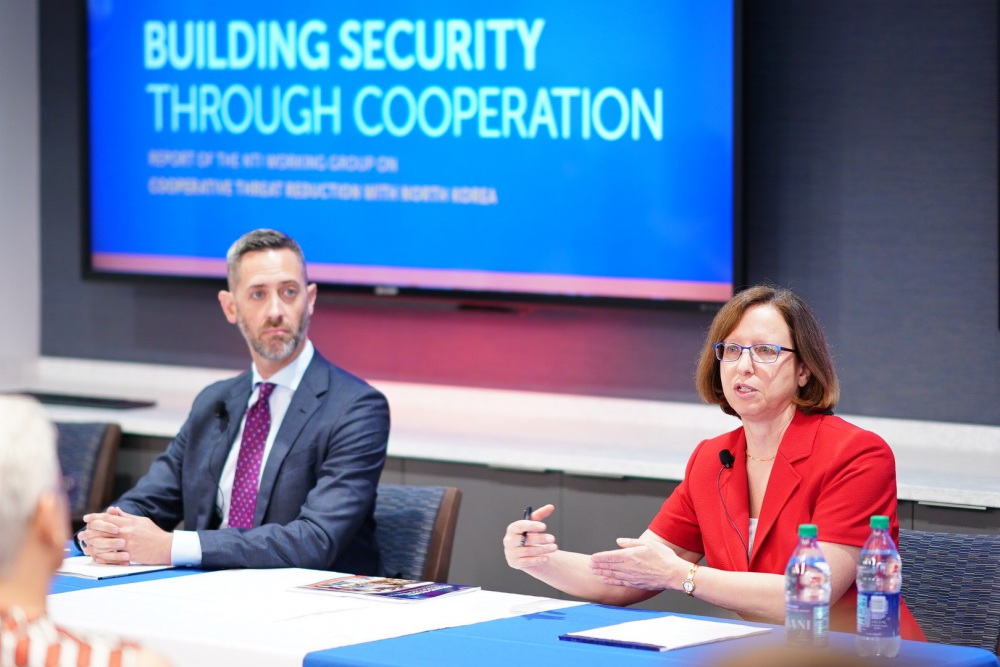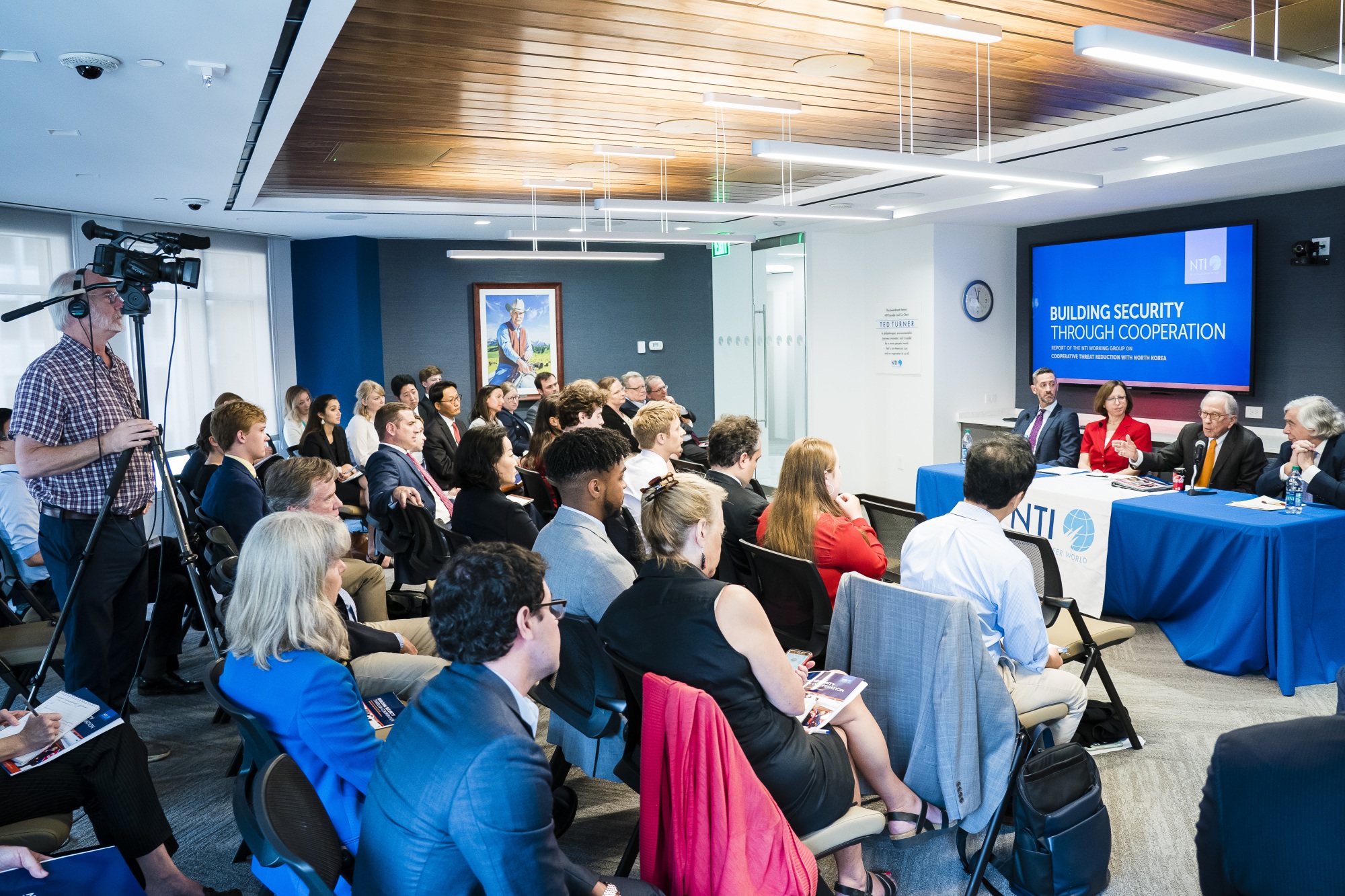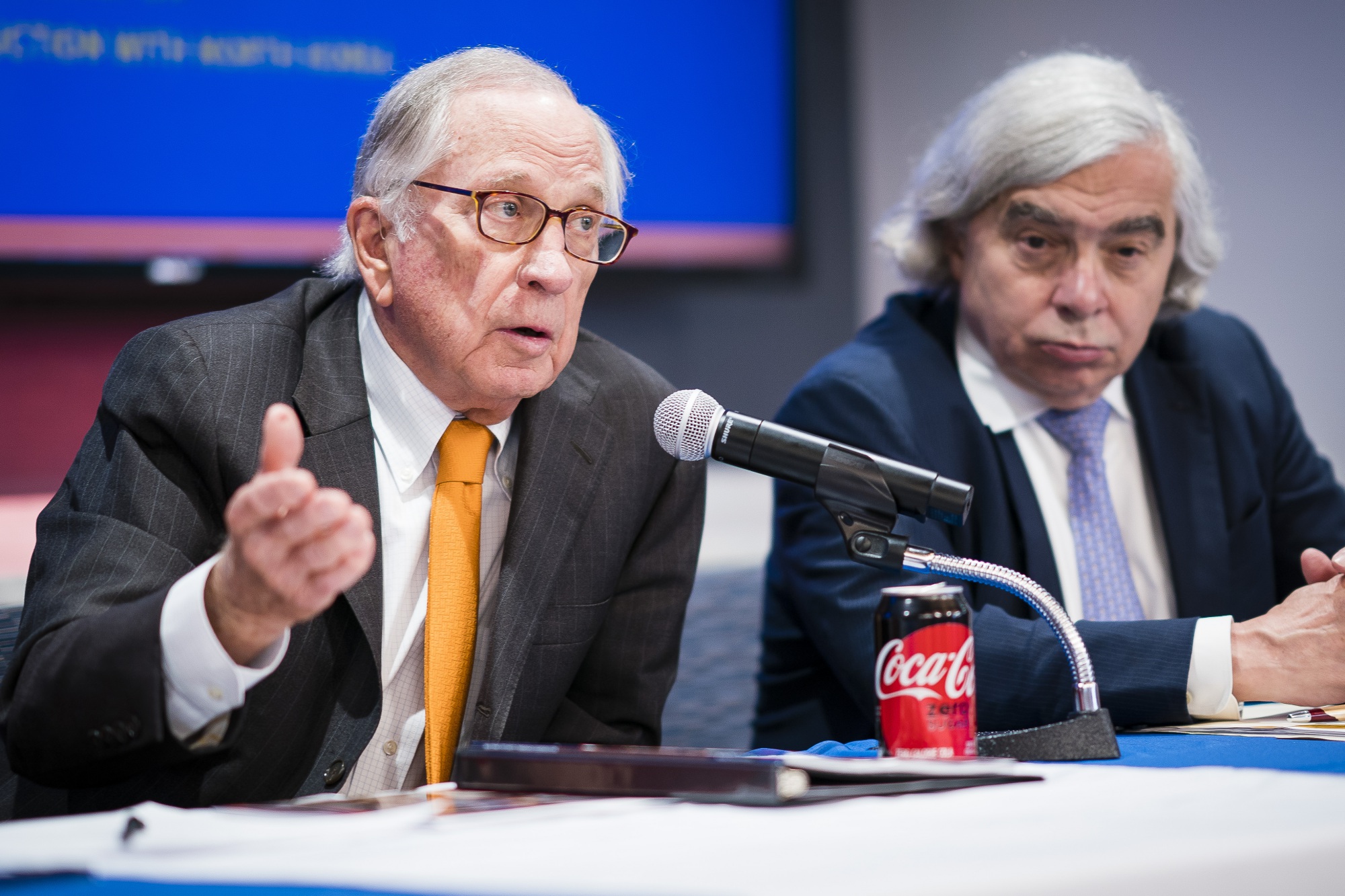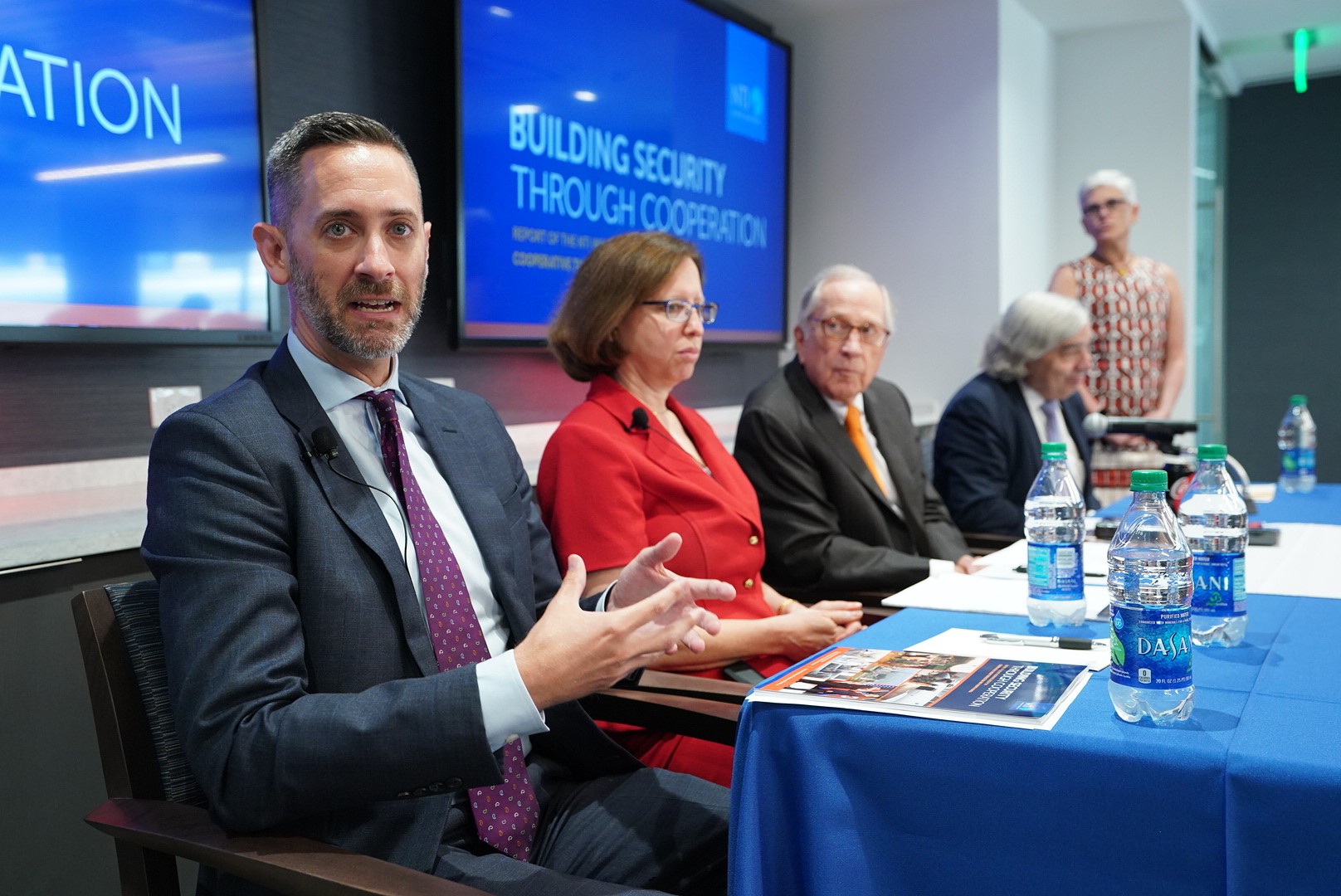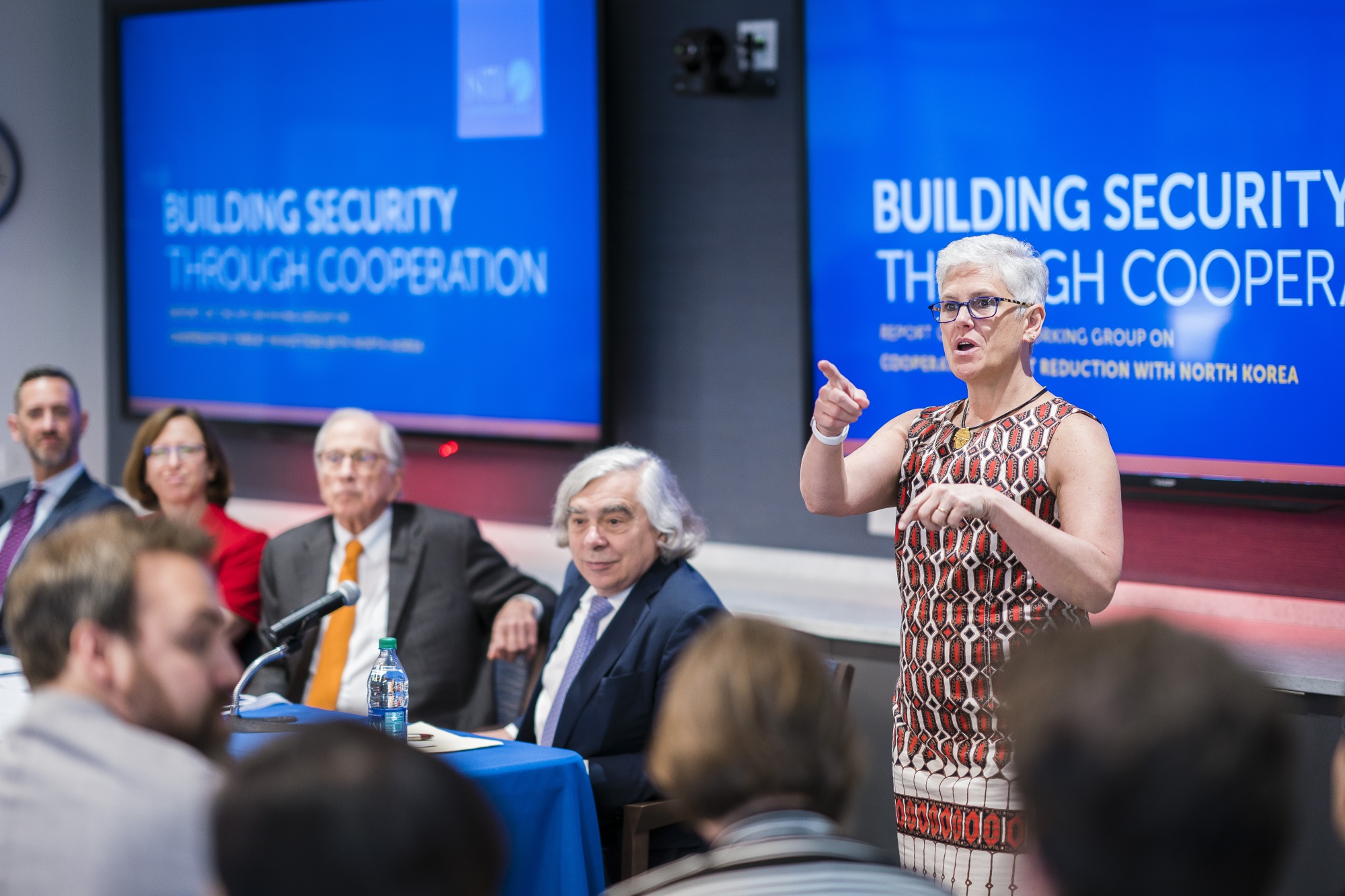This post was written by Margaret Miller, an intern with
NTI’s Global Nuclear Policy Program.
Miller graduated from the College of William & Mary – University of St
Andrews Joint Degree Programme and will begin graduate studies at Georgetown
University’s Security Studies Program in the fall.
On June 19, the Nuclear
Threat Initiative (NTI) hosted foreign diplomats, government officials,
journalists, and members of the nonproliferation expert community for the
release of Building
Security Through Cooperation: Report of the NTI Working Group on Cooperative
Threat Reduction with North Korea, co-authored by NTI Vice
President for Global Nuclear Policy Program Lynn Rusten
and NTI Senior Director for Fuel Cycle and Verification Richard
Johnson. The report comes in the context of stalled diplomacy on the
Korean Peninsula and heightened concerns about North Korea’s weapons of mass
destruction (WMD) capabilities.
The Report: Cooperation to Reduce WMD Risks in North
Korea
Building Security Through Cooperation calls for
incorporating lessons from the Nunn-Lugar Cooperative Threat Reduction (CTR)
program following the break-up of the Soviet Union into today’s diplomacy with
North Korea. The report recognizes that important differences exist with North
Korea, but the model of CTR with former Soviet states offers a valuable
precedent for how a cooperative approach can facilitate the safe and enduring dismantlement
of WMD materials and facilities and prevent proliferation.
A similar approach with North Korea would build trust between
DPRK and foreign scientists and open opportunities for redirecting infrastructure
and technical experts to civilian purposes. Critically, a program modelled
after CTR would work with North Korea to dismantle its nuclear weapons program,
and involve key regional parties in the effort.
A Menu of Options for Security on the Korean Peninsula
At the report release, NTI Executive Vice President Deborah
Rosenblum posed the question: “Could a CTR-like assistance program
be an incentive in the negotiations with North Korea?” She noted that the
report offered “a very creative approach to what will undoubtedly be a very
daunting task” of dismantling WMD programs on the Korean Peninsula.
NTI Co-Chair and CEO Ernest J. Moniz
spoke to the legacy of the late senator (and NTI Board member) Richard Lugar
and his role in championing the CTR program alongside NTI Co-Chair Sam Nunn,
who also was serving in the Senate when the Soviet Union dissolved. Moniz
credited Lugar and Nunn with inspiring the formation of an NTI working group to
determine whether a similar approach could be taken in North Korea. Moniz noted
the need to move beyond the important symbolism of the 2018 Singapore summit
between President Trump and North Korean leader Kim Jong Un and to have empowered
negotiating envoys start hammering out the details of a verifiable agreement. Moniz
acknowledged that North Korea has viewed WMD capabilities as central to its survival
and emphasized the need for a “staged approach” that likely would begin with
the cessation of fissile material production and lead to dismantlement of
nuclear weapons at a later stage.
Nunn explained that the report
is “not a roadmap for diplomacy, but rather it’s a menu of options for
Cooperative Threat Reduction” for leaders in the United States, North Korea,
and other regional states to consider. While recognizing the differences
between post-Soviet states and the DPRK, he emphasized three similarities that
make CTR mutually beneficial:
1.
North Korea wants the negotiations to bring
economic development, and CTR would provide assistance and help transition the
economy.
2.
CTR would facilitate buy-in from technical
personnel by treating them with respect and offering them opportunities to transition
to peaceful and constructive employment.
3.
The North Korean people would potentially
receive economic and health benefits.
Rusten explained that despite the fragile and uncertain state
of negotiations, CTR concepts are relevant now for two reasons:
1.
The report’s recommendation that CTR should be
integrated into the diplomatic process early, rather than introduced after a
deal is reached.
2.
The United States (and other countries) should
undertake necessary planning and preparation, including putting in place
legislative authorities; planning for funding for a CTR-type program; developing
policy guidance and delineating permitted areas for scientific cooperation with
North Korea; reviewing sanctions and
laws that could inadvertently impede the provision of CTR assistance and
preparing remedies; inventorying
technical and human resources that will be needed to implement CTR programs in
North Korea; bolstering congressional and public support; and encouraging other
countries to prepare to contribute to a CTR approach with North Korea.
Johnson addressed “what would this [concept] actually look
like in practice?” He reiterated that the “report does not assume any
specific outcome of negotiations” with North Korea, but rather offers a menu of
ideas relevant to a range of possible outcomes. However, he noted that “the
likelihood of long-term, sustainable cooperation would be greater if the DPRK is
allowed to maintain” even a small-scale civil nuclear program, because North
Korean nuclear scientists and engineers could transition to peaceful
employment. Johnson gave specific
examples of CTR projects such as the dilution and removal of weapons-grade
fissile materials from North Korea in return for either low-enriched uranium
fuel to be used for civil purposes in North Korea or for reuse in another
country’s nuclear power reactors; as well as environmental remediation at
locations and facilities where nuclear activities were conducted.
Takeaways: Incorporate CTR into North Korean Dialogue
Now, Not Later
Rusten expressed NTI’s desire that this report could “stimulate
the U.S. government to continue thinking about incorporating [the CTR] concept
in the negotiations; North Korea to
think about how it might benefit by this kind of approach; and other countries
to think about how they could contribute.” The authors were clear-eyed,
however, about the serious challenges that remain. Johnson explained that “a
culture of secrecy in North Korea” continues to impair cooperation about
verification measures, and it remains to be seen if negotiators can overcome this
and many other barriers.
Creative diplomacy will be critical to establishing a Korean
Peninsula that is peaceful, prosperous, and free from the threat of WMDs. Nunn
concluded that “CTR is not a magic bullet to solve all diplomatic challenges,
but it can be a powerful tool for both diplomacy and for implementation.”
Download the full report here.
Watch video from the release
event here.
